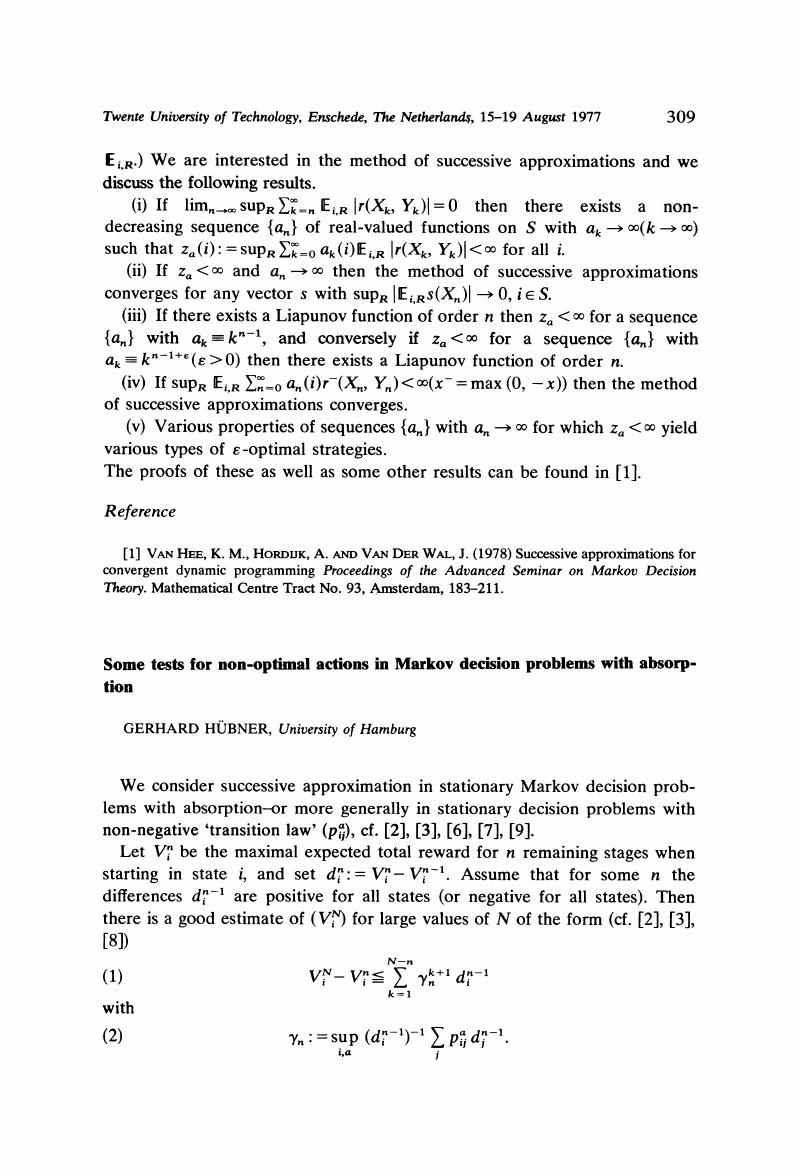No CrossRef data available.
Article contents
Some tests for non-optimal actions in Markov decision problems with absorption
Published online by Cambridge University Press: 01 July 2016
Abstract
An abstract is not available for this content so a preview has been provided. Please use the Get access link above for information on how to access this content.

- Type
- II. Contributed Papers
- Information
- Copyright
- Copyright © Applied Probability Trust 1978
References
[1]
Hastings, N. A. J. (1976) A test for nonoptimal actions in undiscounted finite Markov decision chains. Management Sci.
23, 87–92.CrossRefGoogle Scholar
[2]
Hübner, G. (1975) Extrapolation und Ausschließung suboptimaler Aktionen in endlichstufigen stationären Markoffschen Entscheidungsmodellen. Habilitationsschrift, Hamburg.Google Scholar
[3]
Hübner, G.
Bounds and good policies in stationary finite-stage Markov decision problems. Submitted to
J. Appl. Prob.
Google Scholar
[4]
Hübner, G.
Contraction properties of Markov decision models with applications to the elimination of nonoptimal actions. To be published.Google Scholar
[5]
MacQueen, J. (1967) A test for suboptimal actions in Markovian decision problems. Opns. Res.
15, 559–561.CrossRefGoogle Scholar
[6]
Pliska, S. R. (1976) Optimization of multitype branching processes. Management Sci.
23, 117–124.CrossRefGoogle Scholar
[7]
Porteus, E. L. (1975) Bounds and transformations for discounted finite Markov decision chains. Opns. Res.
23, 761–784.CrossRefGoogle Scholar
[8]
Schellhaas, H. (1974) Zur Extrapolation in Markoffschen Entscheidungsmodellen mit Diskontierung. Z. Opns. Res.
18, 91–104.Google Scholar
[9]
Veinott, A. F. (1969) Discrete dynamic programming with sensitive discount optimality criteria. Ann. Math. Statist.
40, 1635–1660.CrossRefGoogle Scholar


